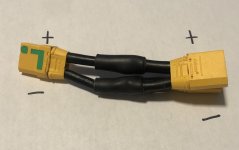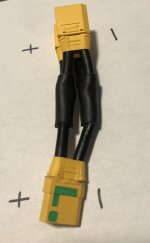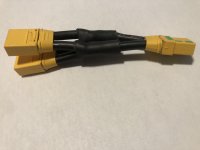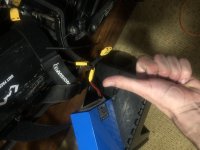Eastwood
100 kW
- Joined
- Jan 13, 2021
- Messages
- 1,479
Well as title says about to connect my batteries in parallel and just want to make sure I’m doing everything right.
Is there anything I need to look out for, besides having equal voltage? I didn’t use any resistors with the parallel connector I made. I just connected the + wires together and then connected the - wires together, pictures below.
Plan to charge both battery packs with the same charger to fully charged and then connect, little nervous and would be lying if I said otherwise lol
I’m a parallel connection virgin :lol: :lol:
Also I’ll double check the voltage with a voltmeter before connecting.
Is there anything I need to look out for, besides having equal voltage? I didn’t use any resistors with the parallel connector I made. I just connected the + wires together and then connected the - wires together, pictures below.
Plan to charge both battery packs with the same charger to fully charged and then connect, little nervous and would be lying if I said otherwise lol
I’m a parallel connection virgin :lol: :lol:
Also I’ll double check the voltage with a voltmeter before connecting.





